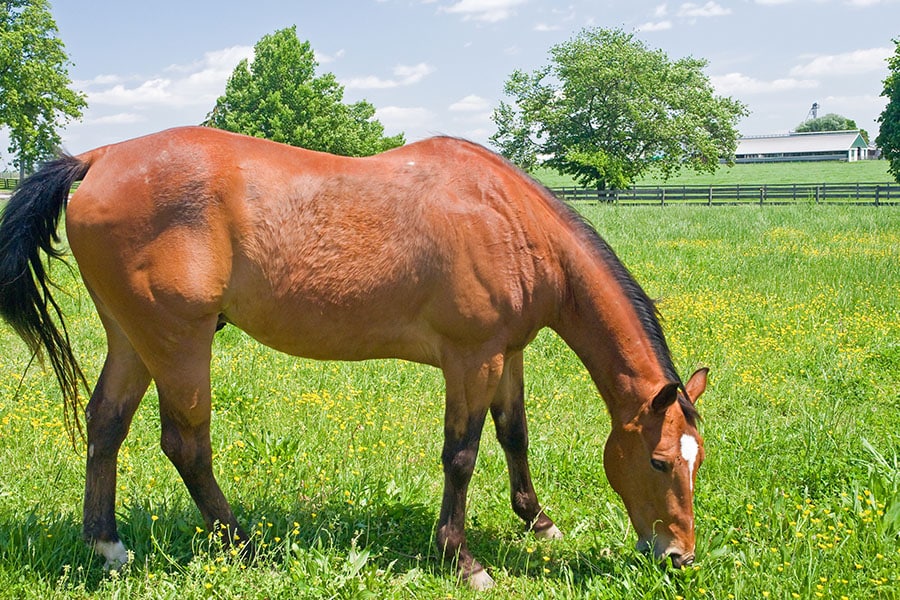Are you looking for ways to improve the upkeep of your pasture? Horses tend to be selective about the forage they will eat. You may begin to see weeds overtake the desirable forage if your horses tend to repeatedly return to the same sections for grazing.
Dividing your pasture into smaller paddocks is a great way to help improve maintenance and allow your horses to get the most grazing and nutrition out of your space. Lets review how to divide your pasture for easy upkeep and improved forage for your horses below. Then we will look at some tips for pasture management.
Dividing the Pasture: 4 Things to Consider
As you begin to plan how you will divide your pasture, there are several things you need to take into consideration in order to achieve the maximum benefits of having smaller paddocks.
Number of Horses that Will Be Grazing in the Pasture
How many horses per acre do you have? It is best to have at least two acres of pasture available for each adult horse in order for them to gain the nutrition they need. This may be adjusted depending on whether you choose to use other methods to supplement their nutrition. Also, the actual amount of forage available in your pasture, the amount of management the pasture receives, and the type of soil the pasture contains can all impact the stocking rate.
Type of Fencing for Dividing the Pasture
There are several different kinds of fences used on farms and in pastures. When considering the different types of fencing available for sectioning off your paddocks, be sure to keep the safety and installation of the fence in mind as well as your budget and the appearance. Utilizing electric fencing is often a preferable option, as it can prove to be a less costly way to go.
Implementing a Rotational Grazing System
Considering a rotational grazing system allows you to plan the number of paddocks you need to section off with fencing. The grass in a paddock needs to be at least six to ten inches high when moving your horses into the space to graze. Knowing this, you need to make sure you have ample pasture divisions to rotate your horses through. This allows each paddock to have a rest period for the grass to grow back to the necessary grazing height.
Determine the Right Number of Paddocks for Your Pasture
With all of these things to consider in mind, the next step is to determine the appropriate number of paddocks for your pasture. Farm and Dairy has a formula to help: “days of rest needed, divided by number of grazing days plus 1”.
4 Tips for Pasture Management
Once you have divided your pasture into smaller paddocks it is important to make sure you keep a regular maintenance schedule in order to get the best performance from your pasture. Some key things you should consider implementing are:
- Mowing the Pasture: This helps to encourage consistent growth of forage and prevent the spread of weeds. Focus mowing in the places your horses tend to avoid when grazing.
- Dragging the Pasture: This helps to reduce piles of manure, preventing parasites and worms from infecting your horses. Dragging should be done at least a few times a year.
- Resting the Pasture: This gives the grass in each paddock time to grow back to grazing height. Resting also prevents weeds and weakened root systems.
- Fertilizing the Pasture: This can encourage growth in your pasture and provide the grass with the nutrients it needs to produce high levels of forage and be more water efficient.
Solutions for Easy Pasture Management
At Performance Footing we provide the products you need for establishing and maintaining your paddocks with ease. Give us a call today at 877-835-0878 to discuss how we can support your pasture management efforts.
